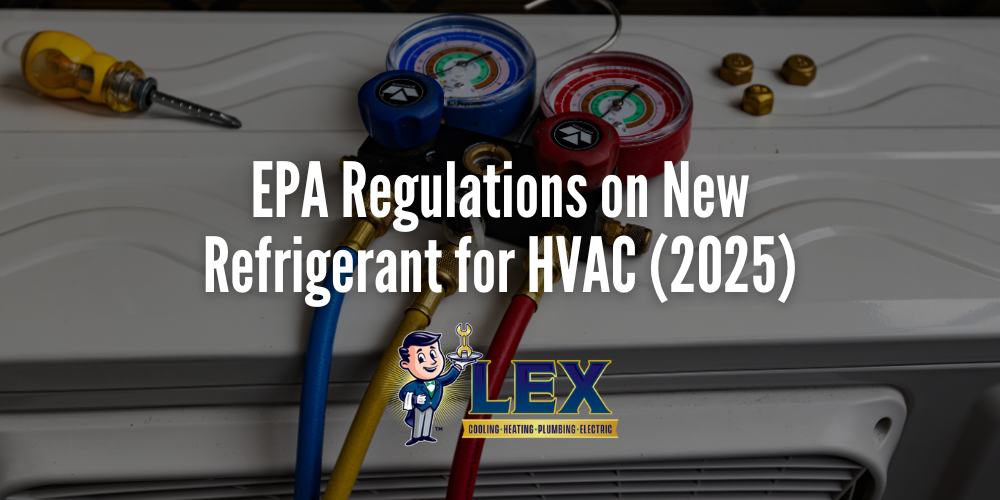The new refrigerant (2025) regulations set out by the Environmental Protection Agency (EPA) are designed to help phase out the less environmentally friendly types of refrigerant used in HVAC equipment today. However, this requirement will likely affect the cost of parts, labor, and HVAC units across the industry. At Lex Air East Texas, we’re here to help you understand everything you need to know about the regulations on new HVAC systems that are going into place starting at the beginning of 2025.
Starting January 1, 2025, all newly manufactured HVAC systems will use environmentally friendly refrigerants, such as R-32 or R-454B, which offer lower environmental impact and improved energy efficiency. These changes are designed to promote sustainability and energy savings. However, they also result in a number of adjustments for homeowners and businesses.
It’s important to understand how these regulations affect refrigerant availability, system design, and long-term costs. If you’re curious about updating your home or business’s HVAC system, contact one of our Tyler air conditioning technicians at Lex Air East Texas today. We’ll help you learn more about how these new regulations may affect you.
Call (903) 833-9510 to schedule our services or to learn more about how we can help you.
What is Refrigerant?
Refrigerant is a chemical compound used in ACs and heat pumps to absorb and transfer heat, enabling the cooling or heating of indoor spaces. It circulates through the system, changing between liquid and gas states as it moves through the system’s components. These include the compressor, condenser, and evaporator. By absorbing heat from inside the building and releasing it outside (or vice versa), refrigerants play a crucial role in regulating indoor temperatures.
Is Freon Refrigerant?
Yes, Freon is a brand name for a group of refrigerants that were once widely used in HVAC systems and appliances for cooling. Due to their ozone-depleting properties, most Freon products, like R-22, have been phased out and replaced with environmentally friendly alternatives.
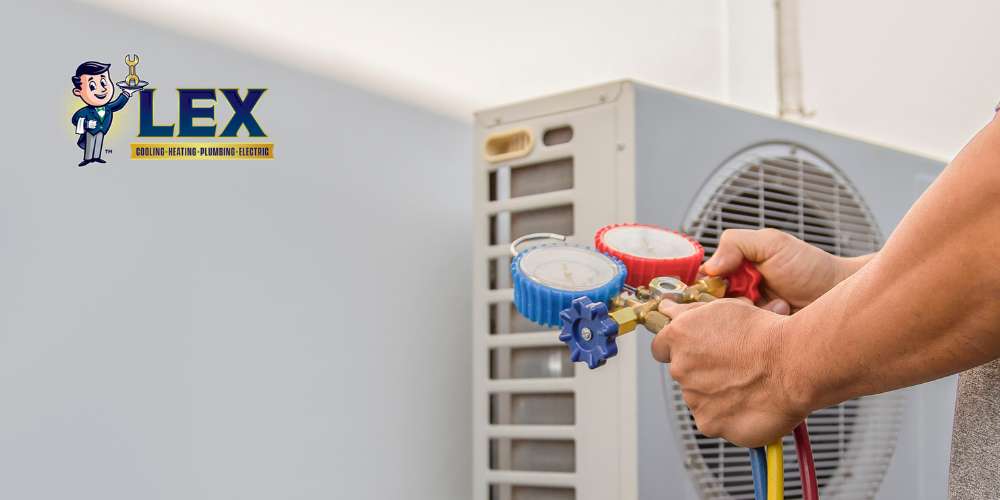
New EPA Refrigerant Regulations 2025
Over the past few decades, there has been a movement to decrease the environmental impact of the HVAC industry through the regulation of refrigerants. Currently, the Environmental Protection Agency (EPA) is implementing changes regarding the installation of new HVAC equipment, which will go into effect starting January 1, 2025.
New HVAC Refrigerant Regulations
Under the 2025 regulations, all new HVAC systems manufactured in 2025 will transition away from R-410A refrigerant entirely, and new equipment will utilize either R-32 or R-454B refrigerant. This aligns with the EPA’s phasedown schedule and the industry’s move toward environmentally sustainable alternatives with lower global warming potential.
Why Are New Systems Using R-32 and R-454B Refrigerant?
The EPA is mandating this move toward new refrigerant for 2025 because R-32 and R-454B refrigerants have lower Global Warming Potential (GWP) ratings compared to R-410A. While R-410A has been the industry standard for refrigerants since 2013, these new refrigerants simply have a lower environmental impact.
Is R-454B Refrigerant Safe?
Unlike R-410A, R-454B is under the class of A2L refrigerants, meaning it is mildly flammable. However, new HVAC systems designed for R-454B include updated safety features. These include advanced leak detection sensors, robust sealing mechanisms, and adherence to updated industry standards for this type of refrigerant.
Benefits of the New HVAC Refrigerant Regulations
The new refrigerant regulations bring several benefits to homeowners, businesses, and the environment. Here are some of the key advantages:
- Reduced environmental impact through lower-global-warming-potential refrigerants.
- Improved energy efficiency in modern HVAC systems.
- Compliance with international climate goals and standards.
- Increased innovation in HVAC technologies and practices.
- Long-term savings on energy costs for consumers.
These regulations not only promote sustainability but also encourage the adoption of more advanced and efficient cooling solutions for a better future.
Downsides of the New HVAC Refrigerant Regulations
While the new refrigerant regulations aim to benefit the environment and energy efficiency, they also present some challenges. Here are a few downsides:
- Higher upfront costs for new HVAC systems.
- Limited availability and increasing cost of R-410A refrigerant.
- Need for HVAC companies to retrain technicians and update tools.
- Potential confusion or hesitation among homeowners about system replacements.
- Increased expenses for businesses maintaining older equipment.
Despite these challenges, the transition encourages long-term solutions that prioritize environmental responsibility and efficiency.
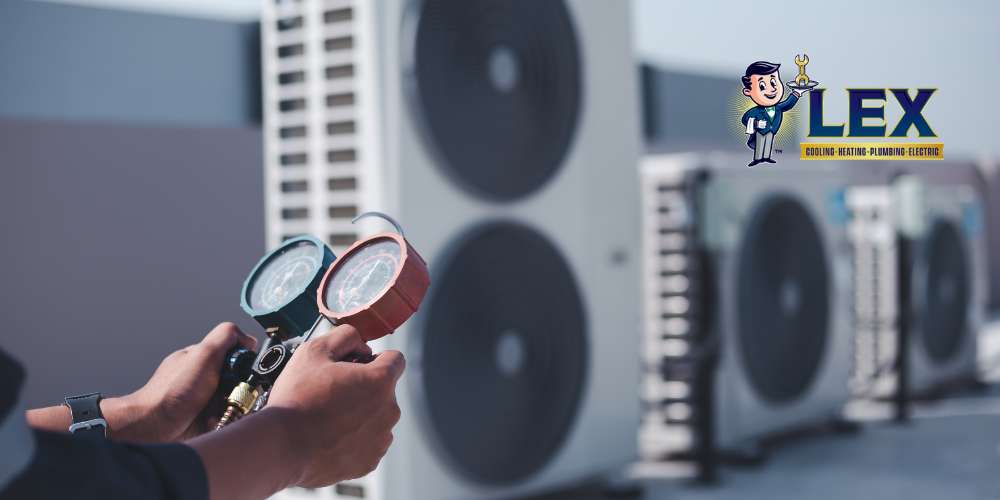
What Do the New AC Refrigerant Regulations Mean for Homeowners in Texas?
If you are a homeowner or building manager in Texas, your HVAC system is an integral part of everyday life in your home or business. Below are some answers to common questions about how these new refrigerants and the R-410A phaseout might affect you directly.
What Kind of Refrigerant is in My HVAC System?
The type of refrigerant in your air conditioner or heat pump depends largely on its age. Many systems purchased prior to 2010 likely use R-22. However, if your system was installed between 2010 and 2024, it almost certainly uses R-410A. To confirm, check the manufacturer’s label on the outdoor unit, which typically lists the refrigerant type.
Can I Still Use My Existing HVAC System if it Uses R-410A Refrigerant?
Yes, you can still use your old air conditioner or heat pump even if it uses R-410A refrigerant. HVAC technicians will even be able to repair your system well into the future. While you can upgrade your system to a new model, you don’t have to replace your old one before the end of the new year.
How Long Will R-410A Be Available?
R-410A will remain available for servicing existing HVAC systems for the foreseeable future. However, its supply will decrease starting in 2025 due to regulatory phase-downs. Additionally, as production declines, the cost of R-410A is expected to rise. This will encourage the transition to newer systems with low-GWP refrigerants.
Will HVAC Systems That Use R-410A Refrigerant Be Available in 2025?
No, HVAC systems that use R-410A refrigerant will no longer be manufactured starting in 2025 due to new environmental regulations. However, you can still purchase existing R-410A systems can still be purchased while inventory lasts, and they will remain serviceable for years.
Should I Wait to Buy A New HVAC System After January 1, 2025?
Whether you should wait to buy a new HVAC system after January 1, 2025, depends on your needs. If your current system is failing, you may be able to save money by replacing your system prior to January 1st. This can help you avoid costly repairs or inefficiency.
However, if you can wait, systems manufactured after 2025 will use the latest refrigerants like R-32 or R-454B, which are more environmentally friendly and may offer improved efficiency. If you need air conditioner installation in Tyler, trust the professionals at Lex Air East Texas. We can also help with any new construction HVAC installation needs in the new year.
Will An R-454B System Future-Proof My Home?
An HVAC system using R-454B refrigerant can help future-proof your home by aligning with current and upcoming environmental regulations, reducing the risk of obsolescence. These systems have the equipment to use low-global-warming-potential refrigerants, making them a sustainable choice that meets future compliance standards. Additionally, their improved efficiency may lower energy costs and enhance long-term value.
Will New HVAC Systems Be Worth The Price?
While the upfront cost of these higher-tech systems may be higher, the long-term savings on energy and maintenance could make new HVAC equipment a worthwhile investment in your home. To determine if replacing your system is cost-effective, consult an HVAC professional. They can evaluate your current system’s efficiency, repair costs, and expected lifespan compared to the benefits of upgrading to a newer model.
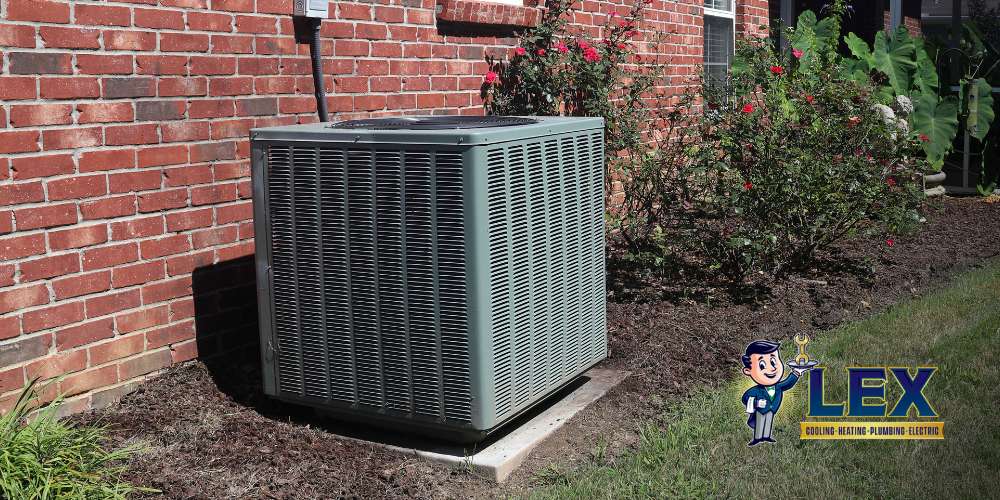
What Do EPA Refrigerant Regulations Mean for HVAC Companies?
In addition to affecting homeowners, these regulations also affect HVAC companies and technicians across the country. Below are some common questions about how to best comply with EPA guidelines regarding these new refrigerants.
Can HVAC Systems Using R-401A Be Installed After January 1, 2025?
No, the EPA’s regulations on HVAC systems using R-410A state that they cannot be manufactured or installed after January 1, 2025, as all new systems must comply with regulations requiring low-global-warming-potential refrigerants like R-32 or R-454B.
For HVAC companies, this means updating inventory, retraining technicians to handle the new refrigerants safely, and educating customers about the benefits and requirements of the new systems. This shift may involve upfront costs, but it also presents opportunities for companies to align with environmentally conscious practices and offer cutting-edge solutions.
Can I Still Use R-410A Refrigerant In Existing Commercial and Residential HVAC Systems?
Yes, you can use R-410A refrigerant in existing commercial and residential HVAC systems even after 2025. The EPA does not expect everyone to stop using R-410A entirely, this move is just one step in their gradual phaseout of high-GWP refrigerants.
However, the availability of R-410A will gradually decrease as production is phased down, which can lead to higher costs. HVAC companies should advise customers to maintain their systems regularly to minimize refrigerant needs or consider upgrading to newer systems using low-GWP refrigerants for long-term cost and environmental benefits.
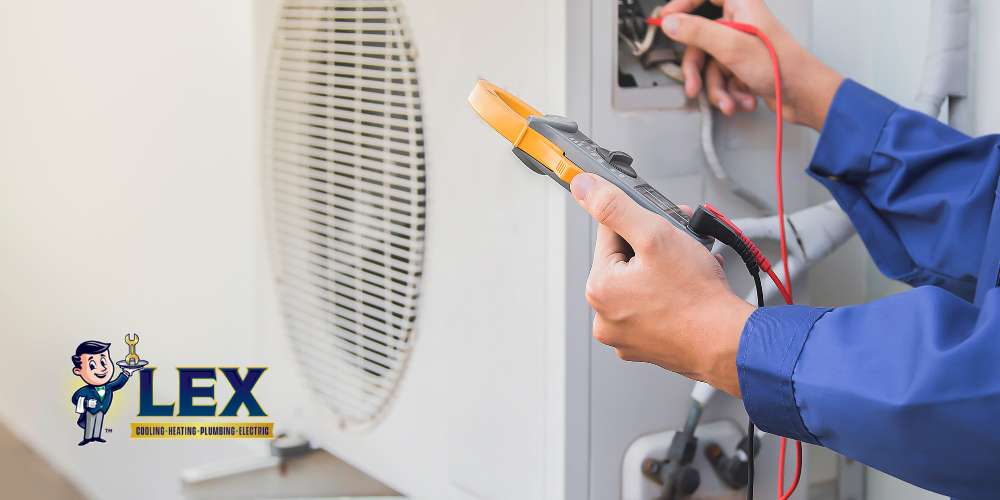
Upgrading Your Tyler, TX Commercial or Residential HVAC System in 2025? Contact Lex Air East Texas Today!
With the phase-out of R-410A refrigerant and the introduction of advanced low-GWP alternatives, now may be the perfect time to consider a system that meets modern standards and reduces long-term costs. Upgrading your commercial or residential heat pump or air conditioning system in 2025 is a smart way to stay ahead of new regulations while enhancing your energy efficiency and environmental impact.
At Lex Air East Texas, we’re here to make the transition simple and stress-free. Our team can provide the latest HVAC systems and refrigerants, ensuring you get a solution tailored to your home or business. Whether you need a complete system upgrade or professional advice on maintaining your existing equipment, we’ll provide top-quality service you can trust.
Don’t wait to future-proof your HVAC system. Call Lex Air East Texas today at (903) 833-9510 or contact us via our website to schedule a consultation or request a quote.

